
The Chevrolet Impala is a full-size car that was built by Chevrolet for model years 1958 to 1985, 1994 to 1996, and 2000 to 2020. The Impala was Chevrolet's popular flagship passenger car and was among the better-selling American-made automobiles in the United States.

The Chevrolet Chevelle is a mid-sized automobile that was produced by Chevrolet in three generations for the 1964 through 1977 model years. Part of the General Motors (GM) A-body platform, the Chevelle was one of Chevrolet's most successful nameplates. Body styles included coupes, sedans, convertibles, and station wagons. The "Super Sport" versions were produced through the 1973 model year and Lagunas from 1973 through to 1976.
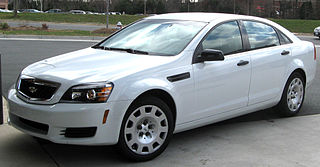
The Chevrolet Caprice is a full-size car produced by Chevrolet in North America for the 1965 through 1996 model years. Full-size Chevrolet sales peaked in 1965, with over a million units sold. It was the most popular car in the U.S. in the 1960s and early 1970s, which, during its production, included the Biscayne, Bel Air, and Impala.

The Aston Martin DB7 is a car that was produced by British luxury car manufacturer Aston Martin from September 1994 to December 2004. It was designed by Ian Callum and Keith Helfet as a grand tourer in coupé and convertible bodystyles. The prototype was complete by November 1992 and debuted at the Geneva Motor Show in March 1993. The six-cylinder DB7 was positioned as an "entry-level" model below the hand-built V8 Virage introduced a few years earlier. This model was the most-produced Aston Martin automobile up to that point in time, with more than 7,000 built before it was replaced by the DB9 in 2004.
Arrows Grand Prix International was a British Formula One team active from 1978 to 2002. It was known as Footwork from 1991 to 1996.
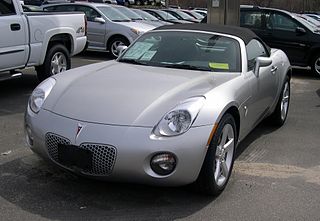
Kappa was General Motors' subcompact rear-wheel drive automobile platform for roadster applications. The architecture debuted in the 2006 Pontiac Solstice and 2007 Saturn Sky, and ended production in 2010. These vehicles generally have a "M" in the fourth digit of their VIN.

The Jaguar XJ-S is a luxury grand tourer manufactured and marketed by British car manufacturer Jaguar Cars from 1975 to 1996, in coupé, fixed-profile and full convertible bodystyles. There were three distinct iterations, with a final production total of 115,413 units over 20 years and seven months.

The Chevrolet Aveo (T200) is the first generation of the Chevrolet Aveo, a subcompact automobile nameplate from the Chevrolet division of the American manufacturer General Motors. The T200 was launched in 2002, developed by the initially-independent South Korean manufacturer Daewoo, later GM Korea. It was originally marketed as the Daewoo Kalos and prominently marketed with the Chevrolet brand as the Aveo. The model received the T200 internal codes during the car's development. The T250 code was designated for the model's major facelift.

The Chevrolet Lumina APV is a minivan that was produced by the Chevrolet division of General Motors. Launched as the first front-wheel drive minivan sold by Chevrolet, the Lumina APV was sold in a single generation from the 1990 to 1996 model years. Marketed alongside the Pontiac Trans Sport and Oldsmobile Silhouette, the Lumina APV competed against the Dodge Grand Caravan/Plymouth Grand Voyager, the extended-length Ford Aerostar, and the Mazda MPV.

The Jaguar XJ220 is a two-seat sports car produced by British luxury car manufacturer Jaguar from 1992 until 1994, in collaboration with the specialist automotive and race engineering company Tom Walkinshaw Racing. The XJ220 recorded a top speed of 217 mph (349 km/h) during testing by Jaguar at the Nardo test track in Italy. This made it the fastest production car from 1992 to 1993. According to Jaguar, an XJ220 prototype managed a Nürburgring lap time of 7:46.36 in 1991 which was faster than any production car lap time before it.
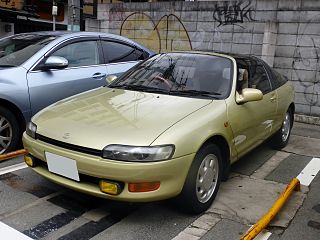
The Toyota Sera is a 3-door 2+2 hatchback coupe manufactured and marketed by Toyota from 1990 to 1996. It was only officially sold in Japan.

The Chevrolet Spark is a city car manufactured by General Motors's subsidiary GM Korea from 1998 to 2022. The vehicle was developed by Daewoo and introduced in 1998 as the Daewoo Matiz. In 2002, General Motors purchased Daewoo Motors, which was marketing the vehicle with several GM marques and nameplates.
Tom Walkinshaw Racing (TWR) was a motor racing team and engineering firm founded in 1976, in Kidlington, near Oxford, England, by touring car racer Tom Walkinshaw.

The Smart Roadster (W452) is a two-door, two-seater sports car classified in the S-segment in Europe. It was first introduced in 2002 by Smart GmbH. The Roadster and its variant, the Roadster Coupé, enjoyed mostly successful sales during their production run. In total, approximately 43,000 units were produced before the model was discontinued in November 2005. The final Smart Roadster built now resides in the Mercedes-Benz Museum. It is defined by a consortium between Switzerland (Swatch), Germany (Mercedes-Benz) and France, whose vehicle remains "Made in France" because it is built entirely at its Hambach factory in Moselle.
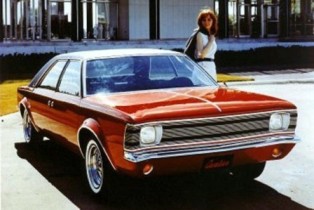
The AMC Cavalier was a compact concept presented by American Motors (AMC) in 1965, noted for symmetrical elements of its design and its interchangeable body parts.

The fifth-generation Chevrolet Camaro is a pony car that was manufactured by American automobile manufacturer Chevrolet from 2010 to 2015 model years. It is the fifth distinct generation of the muscle/pony car to be produced since its original introduction in 1967. Production of the fifth generation model began on March 16, 2009 after several years on hiatus since the previous generation's production ended in 2002 and went on sale to the public in April 2009 for the 2010 model year.
The Daewoo Mirae was a concept car that was unveiled on April 20, 1999, at Daewoo's Seoul design studio 'Design Forum' and then again at the 1999 Seoul Motor Show. "Mirae" in Korean means "future".

The Chevrolet Corvette (C7) is the seventh generation of the Corvette sports car manufactured by American automobile manufacturer Chevrolet from 2014 until 2019. The first C7 Corvettes were delivered in the third quarter of 2013. The racing variants include the C7.R, which won the GTLM 24 Hours of Le Mans.
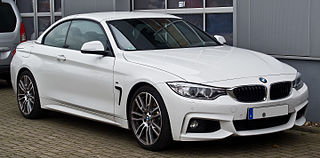
The first generation of the BMW 4 Series consists of the BMW F32, BMW F33 and BMW F36 compact executive cars. The F32/F33/F36 was produced from 2014 to 2020 and is often collectively referred to as the F32.
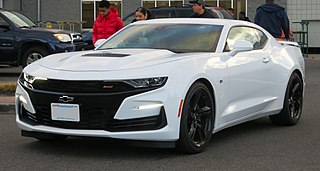
The sixth-generation Chevrolet Camaro is an American pony car. Produced by automobile manufacturer Chevrolet, it was first introduced to the public on May 16, 2015. Sales started in 2015 for the 2016 model year. The Camaro now utilizes the GM Alpha platform shared with the Cadillac ATS and CTS and features MacPherson struts in front, rather than the former multi-link setup. General Motors claims that 70 percent of architectural components in the new Camaro are unique to the car.

















